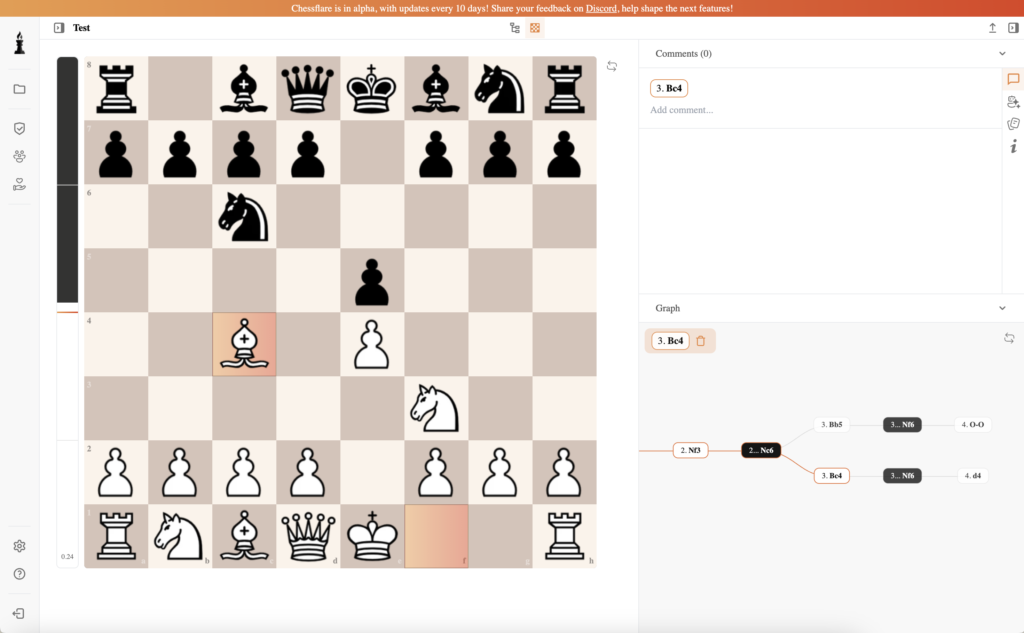A tactical situation in chess where a piece is sacrificed to gain an advantage, often by capturing as much material as possible before being lost.
Introduction
In chess, a Desperado is a tactical concept where a piece that is about to be captured sacrifices itself in a way that gains material or forces an advantageous sequence. The desperado piece often delivers checks, captures, or forces an opponent into a disadvantageous position before being taken.
This resourceful tactic is used to turn a losing position into an equal or winning one by making sure the piece’s capture benefits the player. In this article, we will explore how the Desperado tactic works, when to use it, and examples from famous games.
1. What Is a Desperado in Chess?
A Desperado piece is a piece that:
✔ Is about to be lost (due to being attacked or trapped).
✔ Sacrifices itself for maximum effect before being captured.
✔ Can be used to win material or force a draw.
✅ Example:
- You have a knight that is trapped and will be captured next move.
- Instead of letting it be taken for free, you sacrifice it to capture an opponent’s piece or deliver a check.
2. Types of Desperado Tactics
2.1 Desperado for Material Gain
- When a piece is doomed, it captures enemy material before being taken.
- Ensures that the loss of the piece is at least compensated by gaining something in return.
✅ Example:
- White’s knight on f6 is attacked and will be lost.
- Instead of moving away, White plays Nxg8, capturing a rook before the knight is taken.
2.2 Desperado to Force a Draw
- If down in material, a desperado can force perpetual check or stalemate.
- Often occurs when a player is losing but can use checks or sacrifices to escape defeat.
✅ Example:
- A losing player forces perpetual check using queen sacrifices, securing a draw.
2.3 Mutual Desperado (Both Sides Losing Pieces)
- Both sides have hanging pieces that are doomed.
- The side that executes the most effective desperado often comes out ahead.
✅ Example:
- White’s bishop and knight are attacked.
- White plays Bxg7+, forcing Black’s king to move, before losing the knight.
2.4 Desperado in Endgames
- Sometimes a piece sacrifices itself in an endgame to reach a favorable position.
- Common in pawn races, where a piece sacrifices itself to allow a pawn to promote.
3. Famous Desperado Examples
3.1 Fischer vs. Spassky (1972 World Championship, Game 6)
- Fischer used a Desperado knight sacrifice to create tactical pressure.
- The knight was going to be lost, so he used it to gain an extra pawn and positional advantage.
3.2 Tal’s Tactical Desperado Moves
- Mikhail Tal often sacrificed pieces in desperado style, forcing complications where his opponents blundered.
4. How to Use the Desperado Tactic in Your Games
✔ Always look for doomed pieces—if a piece will be lost, make it useful before it goes.
✔ Find forcing moves—checks, captures, and attacks that disrupt the opponent’s plans.
✔ Look for mutual desperado possibilities—both sides may have hanging pieces, so strike first.
✔ Use desperado to force a draw—if losing, look for perpetual checks or tactical tricks.
5. Conclusion
The Desperado tactic is a powerful resource that can turn a lost position into a winning or drawn game. By sacrificing a doomed piece for maximum value, players can gain material, force their opponent into a bad position, or escape defeat.
✔ Use desperado to win material before losing a piece.
✔ Force perpetual check or stalemate if losing.
✔ Look for mutual desperado chances in tactical positions.
Mastering the Desperado tactic will make you a more tactically aware and resourceful chess player, allowing you to fight back in tough positions and even turn defeats into victories!

